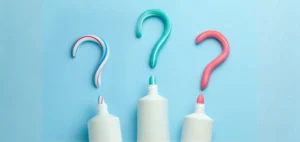There’s nothing quite like your baby’s first toothy grin, but getting there can be a journey filled with drool, fussiness, and lots of questions. Whether you’re navigating teething for the first time or looking ahead to your baby’s first dental appointment, here’s what every parent should know to keep those tiny smiles safe, healthy, and happy.
When Does Teething Start?
Most babies start teething between 4 and 7 months, though some can begin earlier or later. The bottom front teeth (central incisors) usually come in first, followed by the top front teeth. The full set of 20 primary teeth is typically in place by age 3.
Signs of Teething
Teething looks different for every child, but common symptoms include:
- Extra drooling
- Swollen or tender gums
- Chewing on fingers, toys, or anything in sight
- Fussiness or irritability
- Mild temperature (not a true fever)
If your baby has diarrhea, a high fever, or a rash, those symptoms likely aren’t caused by teething — check in with your pediatrician just to be safe.
Soothing Teething Pain
The good news? Teething doesn’t last forever. The bad news? It can be tough on both the baby and the parents. Try these safe and gentle teething remedies:
- Chilled (not frozen) teething rings or washcloths: Great for soothing sore gums.
- Gentle gum massage: Use a clean finger to rub your baby’s gums with light pressure.
- Teething toys: BPA-free silicone toys can offer relief and distraction.
- Extra snuggles and comfort: Sometimes a little extra love goes a long way.
Avoid gels or medications with benzocaine or lidocaine — they aren’t recommended for infants and can be unsafe.
Baby’s First Tooth = Time for a Toothbrush
Once that first tooth pops through, it’s time to start brushing. Use a soft-bristled, infant-sized toothbrush and a tiny smear of fluoride toothpaste (about the size of a grain of rice). Brush gently twice a day, especially before bed.
Even before teeth come in, wiping your baby’s gums with a soft, damp cloth can help remove bacteria and establish a healthy routine early on.
When Should My Baby See the Dentist?
The American Academy of Pediatric Dentistry recommends that babies have their first dental visit by age 1, or within six months of their first tooth erupting — whichever comes first. Early visits help:
- Monitor proper development
- Catch small issues early
- Start healthy habits from the beginning
- Build comfort and confidence with the dental team
At SPD, our goal is to make that first visit fun, easy, and positive for both you and your child.
Preventing Tooth Decay from the Start
Did you know that even baby teeth can get cavities? Here’s how to help prevent early childhood cavities:
- Avoid putting your baby to bed with a bottle of milk or juice
- Don’t dip pacifiers in honey or sugar
- Limit sugary drinks and snacks as your baby starts solids
- Brush your baby’s teeth with fluoride toothpaste as soon as they come in
- Schedule regular dental checkups starting at age 1
Even though baby teeth eventually fall out, they play a big role in helping your child speak, eat, and hold space for permanent teeth. Keeping them healthy sets the stage for a strong, confident smile.
A Note on Pacifiers & Thumb-Sucking
It’s completely normal for babies to suck on pacifiers or their thumbs — it’s a natural way to self-soothe. Most children outgrow this habit by age 3. If it continues beyond age 4, it may start to affect the way their teeth and jaws develop. If you have questions or concerns, we’re always here to help with guidance and encouragement.
Final Thoughts: Start Early, Smile Bright
A healthy smile starts long before the tooth fairy arrives. With the right care, support, and early habits, your baby will be well on their way to a lifetime of good oral health. And at SPD, we’re here to cheer you on every step of the way — from that first gummy smile to the first day of kindergarten and beyond. Need help scheduling your baby’s first dental visit? Our pediatric specialists make it simple, supportive, and stress-free. Give us a call — we’d love to meet you both!



